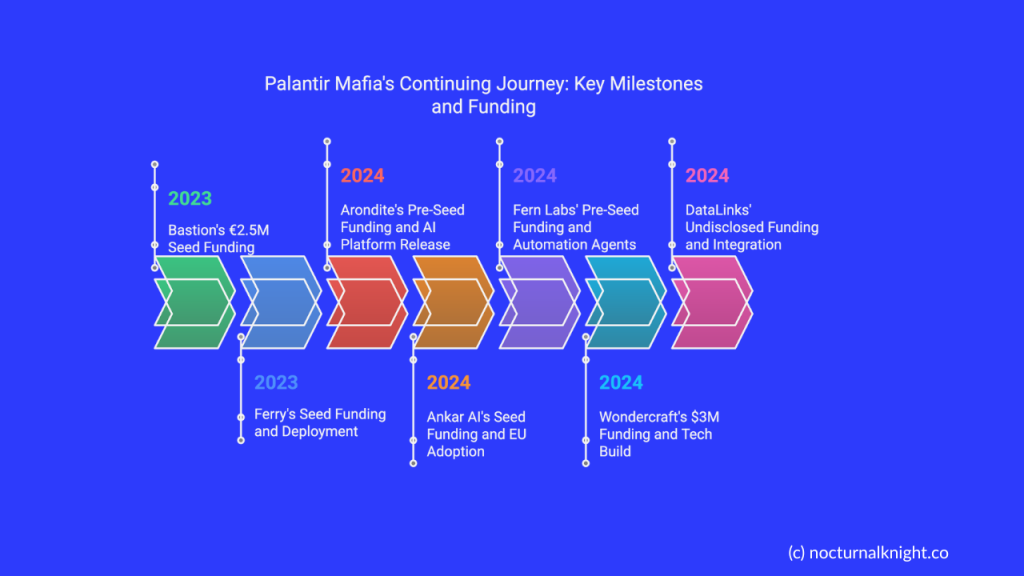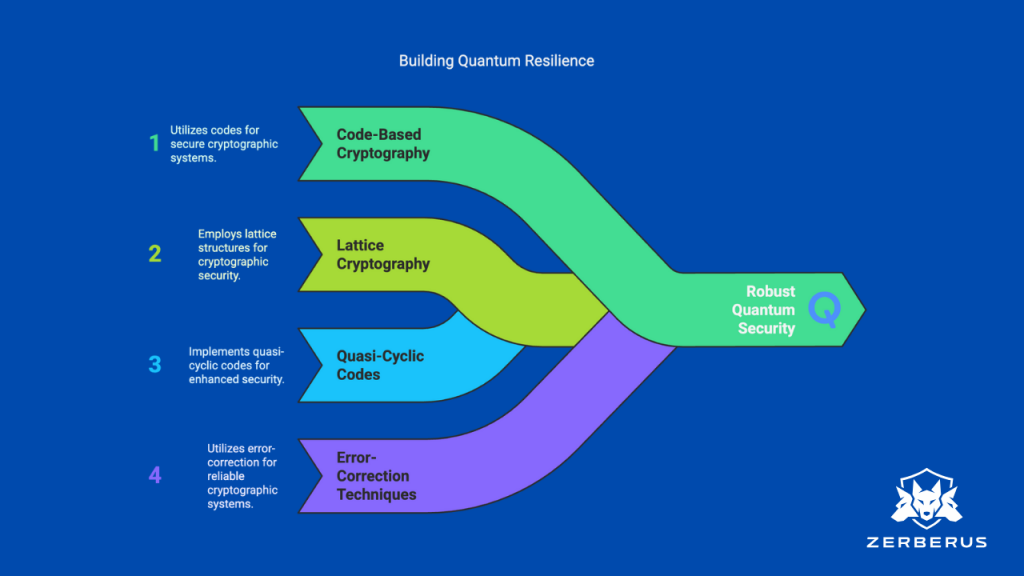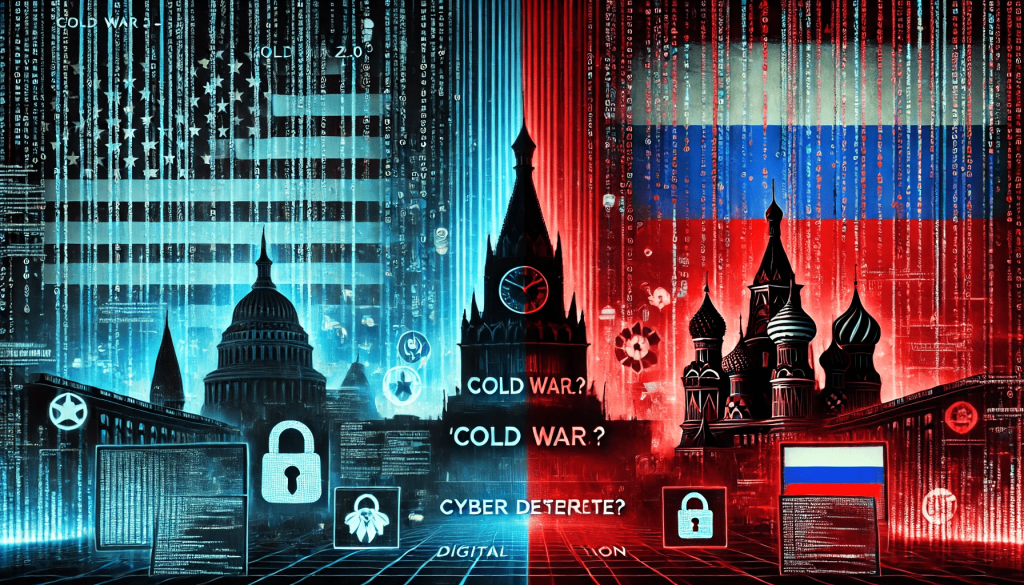Inside the Palantir Mafia: Startups That Are Quietly Shaping the Future
Inside the Palantir Mafia: Recent Moves, New Players, and Unwritten Rules
(Part 2: 2023–2025 Update)
I. Introduction: The Palantir Mafia Evolves
The “Palantir Mafia” has quietly become one of the most influential networks in the tech world, rivalling even the legendary PayPal Mafia. Since our last deep dive, this group of alumni from the data analytics giant has continued to reshape industries, launch groundbreaking startups, and redefine how technology intersects with defence, AI, and beyond.
In this update, we’ll explore recent developments, decode the playbooks that drive their success, and unveil the shadow curriculum that seems to guide every Palantir alum’s journey.
II. Deep Dive: Updates on Key Figures and Their Companies
1. Palmer Luckey (Anduril Industries) (or the Elon Musk of GenZ)
Original Focus: AI-powered defence infrastructure (e.g., autonomous drones, sensor networks).
2023–2025 Developments:
- $12B Valuation (2024): Anduril secured a $1.5B Series E led by Valor Equity Partners, doubling its valuation to $12B.
- Lattice for NATO: Deployed its Lattice OS across NATO members for real-time battlefield analytics, a direct evolution of Palantir’s Gotham platform.
- Controversy: Faced scrutiny for supplying AI surveillance systems to conflict zones like Sudan, sparking debates about autonomous weapons ethics.
Future Outlook: Anduril is poised to dominate the $200B defence tech market, with plans to expand into AI-driven logistics for the Pentagon.
2. Mati Staniszewski (ElevenLabs)
Original Focus: Voice cloning and synthetic media.
2023–2025 Developments:
- $1.4B Unicorn Status (2023): Raised $80M Series B from a16z, reaching a $1.4B valuation.
- Hollywood Adoption: Partnered with Netflix to dub shows into 20+ languages using AI voices indistinguishable from humans.
- Ethics Overhaul: Launched “Voice Integrity” tools to combat deepfakes after backlash over misuse in elections.
3. Leigh Madden (Epirus)
Original Focus: Counter-drone microwave technology.
2023–2025 Developments:
- DoD Contracts: Won $300M in Pentagon contracts to deploy its Leonidas system in Ukraine and Taiwan.
- SPAC Exit: Merged with a blank-check company in 2024, valuing Epirus at $5B.
III. New Mafia Members: Emerging Stars from Palantir
Key Statistics
- 31% of 170+ Palantir-founded startups launched since 2020, with a surge in AI, defence tech, and data infrastructure ventures.
- $10 Braised in the past 3 years by alumni startups, bringing total funding to $24B.
- 15% of startups have gone through Y Combinator, while firms like Thrive Capital and a16z lead investments.

| Company Name | Founder(s) | Funding | Sector | Significant Achievements/Milestones |
|---|---|---|---|---|
| Arondite | Will Blyth, Rob Underhill | Undisclosed pre-seed (2024) | Defense Tech | Released AI platform Cobalt; won defense contracts |
| Bastion | Arnaud Drizard, Robin Costé, Sebastien Duc | €2.5M seed (2023) | Security & Compliance | Profitable, preparing for 2025 Series A |
| Ankar AI | Wiem Gharbi, Tamar Gomez | Seed (2024) | AI Tools for R&D | AI patent research tools adopted by EU tech firms |
| Fern Labs | Ash Edwards, Taylor Young, Alex Goddijn | $3M pre-seed (2024) | AI Automation | Developed open-ended process automation agents |
| Ferry | Ethan Waldie, Dominic Aits | Seed (2023) | Digital Manufacturing | Deployed in Fortune 500 manufacturers |
| Wondercraft | Dimitris Nikolaou, Youssef Rizk | $3M (2024) | AI Audio | Built on ElevenLabs’ tech; YC-backed |
| Ameba | Craig Massie | $8.8M total (2023) | Supply Chain Data | Raised $7.1M seed led by Hedosophia |
| DataLinks | Francisco Ferreira, Andrzej Grzesik | Undisclosed (2024) | Data Integration | Connects enterprise reports with live datasets |
IV. Decoded: Playbooks from the Palantir Diaspora
Palantir alumni have developed a distinct set of playbooks that guide their ventures, many of which are reshaping industries. Here are the key frameworks:
1. First-Principles Problem-Solving
At Palantir, solving problems from first principles wasn’t just encouraged—it was a mandate. Alumni carry this mindset into their startups, breaking down complex challenges into fundamental truths and rebuilding solutions from scratch.
Example: Anduril’s Palmer Luckey applied first-principles thinking to reimagine defense technology, creating autonomous systems that are faster, cheaper, and more effective than traditional military solutions.
2. Talent Density Obsession
Palantir alumni believe in hiring not just good people but exceptional ones—and then creating an environment where they can thrive.
Lesson: “A small team of A+ players can outperform a massive team of B players.” Startups like Founders Fund-backed Resilience show how a high-talent density can accelerate innovation in biotech.
3. Operational Security from Day 1
Security isn’t an afterthought for Palantir alumni—it’s baked into their DNA. Whether it’s protecting sensitive data or safeguarding intellectual property, operational security is treated as core to product development.
Example: Alumni-founded startups like Bastion prioritize cybersecurity as a foundational element rather than a feature to be added later.
4. Fundraising via Narrative + Network Leverage
Palantir alumni are masters at crafting compelling narratives for investors and leveraging their networks to secure funding. They don’t just pitch products—they sell visions of transformative change.
Case Study: ElevenLabs’ ability to articulate its vision for AI-driven voice technology helped secure its $80M Series B and unicorn status.
V. From Palantir to Power: What Startups Can Learn from the Mafia Effect
1. Internal Culture: Building for Resilience
Palantir alumni understand that culture isn’t just about perks or values on a wall—it’s about creating an environment where people can do their best work under pressure.
Takeaway: Build cultures that encourage radical candor, intellectual rigor, and relentless execution.
2. Zero-to-One Mindsets
Borrowing from Peter Thiel’s famous philosophy, Palantir alumni excel at identifying opportunities where they can create something entirely new rather than iterating on what already exists.
Example: Fern Labs is redefining enterprise workflow automation with AI agents, described as “Palantir’s spiritual successor for AI ops” by Sifted.
3. Strategic Hiring: The Right People at the Right Time
Palantir alumni know that hiring decisions can make or break an early-stage startup. They focus on bringing in people who not only have exceptional skills but also align deeply with the company’s mission.
4. Geopolitical Awareness: Building with Context
Working at Palantir required navigating complex geopolitical landscapes and understanding how technology intersects with policy and power structures. Alumni bring this awareness into their startups.
Lesson for Emerging Markets: Founders should consider how their products fit into larger geopolitical or regulatory frameworks.
Example: Anduril’s Taiwan Strategy: Mirroring Palantir’s government work, Anduril embedded engineers with Taiwan’s military to co-develop counter-invasion AI models.
VI. The Shadow Curriculum: Lessons No One Teaches but Everyone from Palantir Seems to Know
Lesson 1: “Don’t Be the Smartest Person in the Room”
At Palantir, success wasn’t about individual brilliance—it was about creating environments where teams could collectively solve problems better than any one person could alone.
Takeaway: As a founder or leader, focus on making others sharper rather than proving your own intelligence.
Lesson 2: “Security Is Product—Treat It Like UX”
For Palantirians, security isn’t just a backend concern; it’s integral to user experience. This mindset has influenced how alumni design systems that are both secure and user-friendly.
Example: Startups like Bastion embed security directly into their compliance platforms.
Lesson 3: “Think Like an Operator”
Whether it’s scaling teams or managing crises, Palantir alumni approach challenges with an operator’s mindset—focused on execution and outcomes rather than abstract strategy.
Lesson 4: “Operate Like a Spy”
Palantirians treat corporate strategy like intelligence ops.
Example: ElevenLabs’ Stealth Pivot: Staniszewski quietly shifted from consumer apps to enterprise contracts after discovering government interest in voice cloning—a tactic learned from Palantir’s classified project shifts.
Lesson 5: “Build Coalitions, Not Just Products”
Anduril’s Luckey lobbied Congress to pass the AI Defense Act of 2024, leveraging Palantir’s network of ex-DoD contacts.
VII. Engineering Influence: Mapping the Palantir Alumni’s Quiet Takeover of Tech
The influence of Palantir alumni extends far beyond their own ventures—they’ve quietly infiltrated some of the most powerful roles in tech across various industries.
The Alumni Power Matrix
| Sector | Key Alumni | Strategic Role |
|---|---|---|
| Defense Tech | Palmer Luckey (Anduril) | Board seats at Shield AI, Skydio |
| Fintech | Joe Lonsdale (Addepar) | Advisor to 8 Central Banks |
| AI/ML | Mati Staniszewski | NATO’s Synthetic Media Taskforce |
Why Chiefs of Staff Rule: Ex-Palantir Chiefs of Staff now lead operations at SpaceX, OpenAI, and 15% of YC Top Companies—roles critical for scaling without losing operational security.
VIII. Conclusion: The Mafia’s Enduring Edge
The Palantir playbook—first principles, talent density, and geopolitical savvy—has become the gold standard for startups aiming to dominate regulated industries. As alumni like Luckey and Staniszewski redefine defense and AI, their shadow curriculum offers a masterclass in building companies that don’t just adapt to the future—they engineer it.
The “Palantir Mafia” isn’t just reshaping industries—it’s redefining how startups operate at every level, from culture to strategy to execution. For founders looking to emulate their success, the lessons are clear: think deeply, hire strategically, build securely, and always operate with clarity of purpose.
As this diaspora continues to grow, its influence will only deepen—quietly engineering the next wave of transformative companies across tech and beyond.
References & Further Reading
- Forbes. (2024). “Anduril’s $12B Valuation Marks Defense Tech’s Ascendance”
- Reuters. (2023). “NATO Adopts Anduril’s Lattice OS”
- TechCrunch. (2023). “ElevenLabs raises $80M at $1.4B valuation for AI-powered voice cloning and synthesis”
- Code Execution Dataset. (2025). Internal analysis of Palantir alumni ventures.
- New Economies. (2024). “Startup Factories: Palantir”
- Sifted. (2025). “19 Former Palantir Employees Now Heading Up Startups”
- Prince Chhirolya, LinkedIn. (2024). “Palantir Alumni Network Analysis”
- John Kim, LinkedIn. (2024). “Why Palantir Technologies Alumni Are Great Founders”
- Wall Street Journal. (2024). “Anduril’s AI-Powered Defense Systems Gain Traction in Taiwan”
- The Information. (2024). “Inside ElevenLabs’ Pivot to Enterprise AI”
- Politico. (2024). “Tech Founders Lobby for AI Defense Act”
- TechCrunch. (2025). “Why Palantir Chiefs of Staff Are in Demand”



